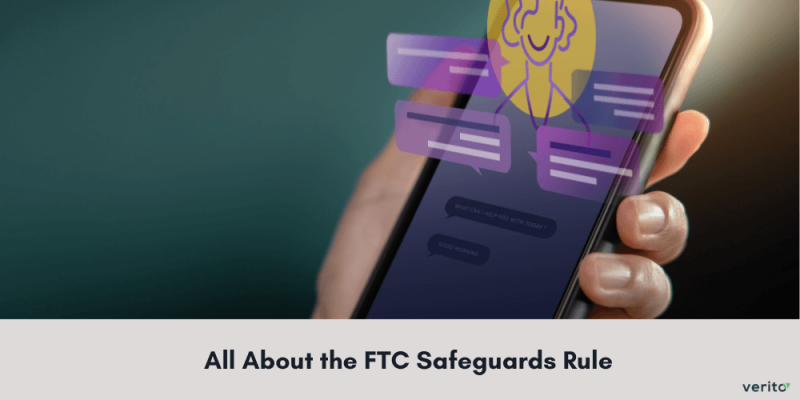The way we do business these days has made the personal information of consumers a precious treasure to be stored in a digital vault. Imagine a mighty castle perched on a hill, surrounded by strong walls and watchtowers. Inside, there are valuable treasures and secrets. Just as castles were built to protect valuable things in the past, the FTC Safeguards Rule is like a modern-day guardian to ensure that this data is safe from online threats. It plays a similar role to shield your personal information from cyberattacks and data breaches, just like the castle’s walls protect its riches.
Since technology is everywhere, it’s really important to keep consumer information safe. Businesses collect a lot of your data – from money-related details to personal likes and dislikes. The FTC Safeguards Rule, being a safety guide, helps businesses take care of the data and make sure they do their best to keep it safe.
In this journey, we’ll explore what the FTC Safeguards Rule is all about.
What is the FTC Safeguards Rule?
The FTC Safeguards Rule is a set of guidelines established by the Federal Trade Commission (FTC), hence the name. It is meant to help businesses to protect sensitive customer information and ensure they’re taking the right steps to keep the data safe from cyber threats and data breaches.
The rules are designed to safeguard valuable information like names, addresses, payment details, and more that customers share with different types of businesses. This rule applies particularly to businesses that handle a lot of customer data, like banks, financial companies, and even online retailers.
The main idea behind the FTC Safeguards Rule is to make sure that businesses have a solid plan in place to identify potential risks to customer data and take measures to reduce those risks. It’s like setting up a security system for your digital world. This involves creating a protective shield around customer data, putting locks on virtual doors, and setting up alarms to alert you if anything suspicious happens.
By following the FTC Safeguards Rule, businesses not only safeguard customer information but also build trust.
Who is Covered Under the FTC Safeguards Rules?
The FTC Safeguards Rule applies to a wide range of businesses that handle sensitive customer information. If your business collects, stores, processes, or shares personal information from customers, you’re likely to fall under the umbrella of this rule.
Here’s a breakdown of who is covered under the FTC Safeguards Rule:
-
Financial institutions
This includes banks, credit unions, and other financial entities that deal with customers’ financial data, such as account numbers, credit card details, and transaction history.
-
Non-bank financial companies
This category includes entities like payday lenders, mortgage brokers, and certain types of lenders that handle customers’ financial information.
-
Credit reporting agencies
Businesses that collect and provide credit information about individuals are also covered. These agencies compile credit reports, credit scores, and other credit-related data.
You should also know that:
- The FTC Safeguards Rule applies to financial institutions within FTC’s jurisdiction not under enforcement of another regulator per section 505 of the Gramm-Leach-Bliley Act (15 U.S.C. § 6805).
- A ‘financial institution’ is defined as engaging in “financial in nature” activities or those “incidental to financial activities” per Section 314.1(b).
- Your business could qualify as a financial institution under the Rule, which has a broader definition than common conversation usage. The focus is on your business activities, not mere categorization.
- To assess coverage, refer to Section 314.2(h) of the Rule which provides many examples of financial institutions, like mortgage lenders, payday lenders, finance companies, etc.
What Does the FTC Safeguards Rule Want Institutions to Do?
Here’s what the FTC Safeguards Rule requires institutions to do:
-
Identify and assess risks
Covered institutions are required to identify and evaluate potential risks to customer information. This involves a thorough analysis of internal and external vulnerabilities that could compromise data security.
-
Develop a security plan
Businesses must create a comprehensive data security plan tailored to their operations and risks. This plan outlines measures to mitigate identified risks and establish protective protocols.
-
Implement safeguards
The Safeguards Rule expects institutions to put in place strong safeguards and controls to protect customer information. This might include encryption, access controls, firewalls, and secure authentication processes.
-
Train employees
Institutions are also tasked with educating their employees about the importance of data security and their role in maintaining it. Regular training ensures that staff members are well-informed about security practices and protocols.
-
Oversee service providers
If a business uses external service providers that have access to customer data, the rule requires diligent oversight of these providers to ensure they also maintain robust data protection measures.
-
Detect and respond to threats
Covered institutions must implement mechanisms for detecting unauthorized access, data breaches, or suspicious activities. In case of a security incident, swift and appropriate responses are necessary to mitigate the impact.
-
Regularly update and adjust measures
The digital landscape is constantly evolving, and new threats emerge. The FTC Safeguards Rule mandates that institutions regularly review, update, and adjust their security measures to stay ahead of potential risks.
-
Monitor and test
Ongoing monitoring and testing of security measures are crucial to ensure their effectiveness. This involves periodic assessments, vulnerability scans, and simulated attacks to identify and address vulnerabilities.
-
Document and report
Covered entities must maintain detailed records of their data security efforts and be prepared to provide reports to the FTC upon request. These records demonstrate compliance and due diligence.








2 comments
Comments are closed.